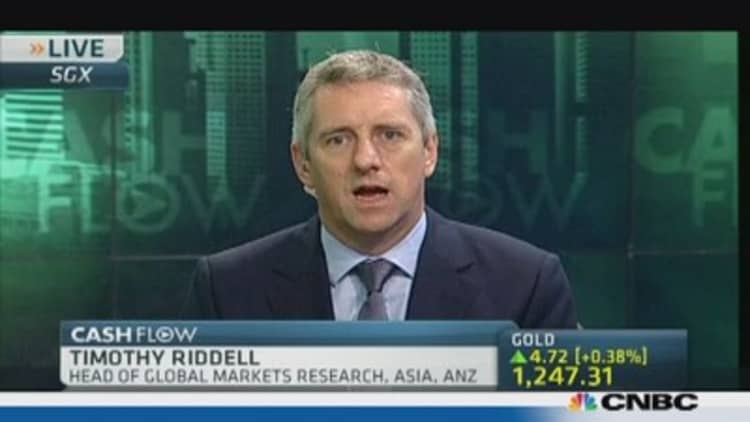China's manufacturing activity expanded in November but at a slower pace than October, a survey from HSBC showed on Thursday.
The HSBC flash Purchasing Managers' Index (PMI) fell to 50.4 from a seven-month high of 50.9 in October, staying above the key 50-mark which separates expansion from contraction.
(Read more: China's reforms: 5 key ones you should know)
"We have seen some recovery in the last 3-6 months because of the mini stimulus earlier this year and that impact is fading," Kevin Lai, senior economist for China and Hong Kong at Daiwa Capital Markets.
In July, the government unveiled initiatives to support growth including cutting taxes for some small and micro-sized enterprises and measures to stabilize exports and speed up railway investment to bolster economic growth.

While the economy has shown stabilization since, with third quarter gross domestic product growth notching the best performance so far this year at 7.8 percent, analysts still see pockets of weakness.
A sub-index in the PMI measuring new export orders fell to a three-month low of 49.4 in November from 51.3 in the previous month, reflecting the sluggish demand from overseas markets.
(Read more: Is inflation a new risk for China's economy?)
"We have yet to see a full recovery from exports so going forward, if we don't see another round of stimulus or policy support then growth will moderate a little bit. But it's not a huge issue. Next year, if we see some credit issues, that would really undermine growth," he added.
China has set an annual economic growth target of 7.5 percent for this year, widely seen by economists as an achievable goal, but would still be the country's slowest pace of growth in 23 years.

The country's top leadership unveiled late last week a slew of economic and social reforms which are expected to give the world's second biggest economy fresh drivers for growth.
The Australian dollar fell a quarter of a U.S. cent after the PMI data, while most Asian stock markets extended their losses with the Shanghai Composite stock index down over 1 percent.
(Read more: Is a baby boom coming or China?)
According to Timothy Riddell, Head of Global Markets Research, Asia at ANZ, the factory activity pullback isn't surprising given the rising rates in China over the past few months.
The seven-day report rate, viewed as a key gauge of confidence to lend in the interbank markets, jumped to 5.94 percent earlier this week, its highest level since June when it hit 11.2 percent, sparking concerns about a liquidity crunch.
"We need to realize that this is coming at a period when we've been having rising rates domestically in China," said Riddell. "Remember, the survey isn't hard data. So against a rising rate profile, it doesn't really shock me."

